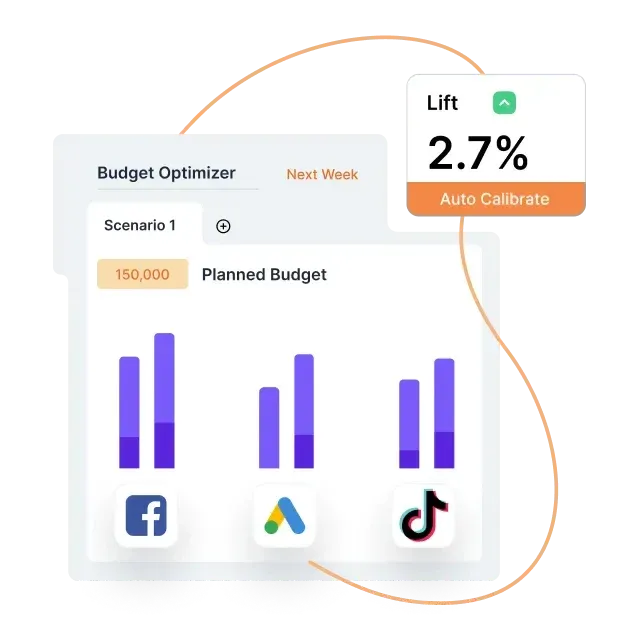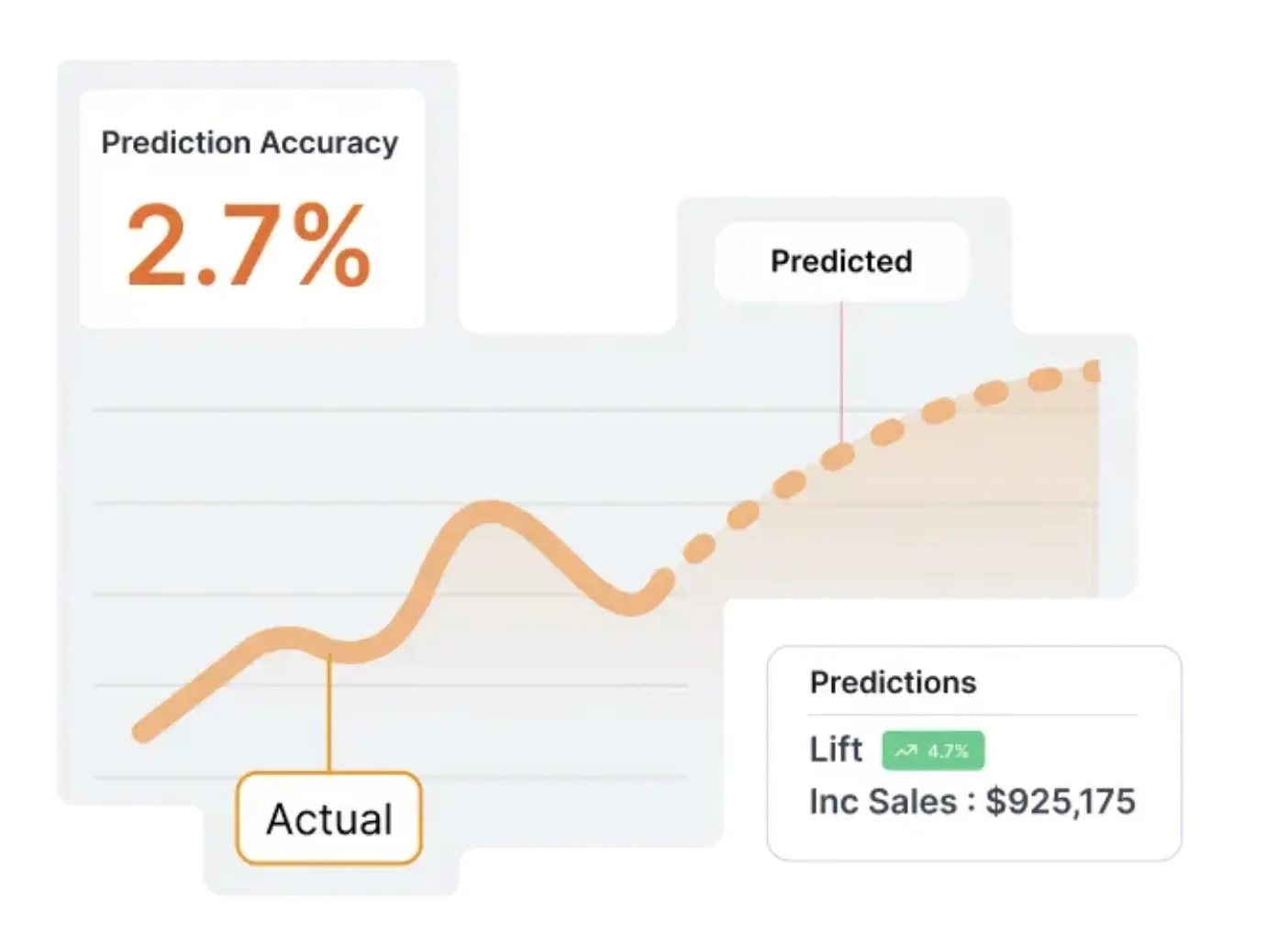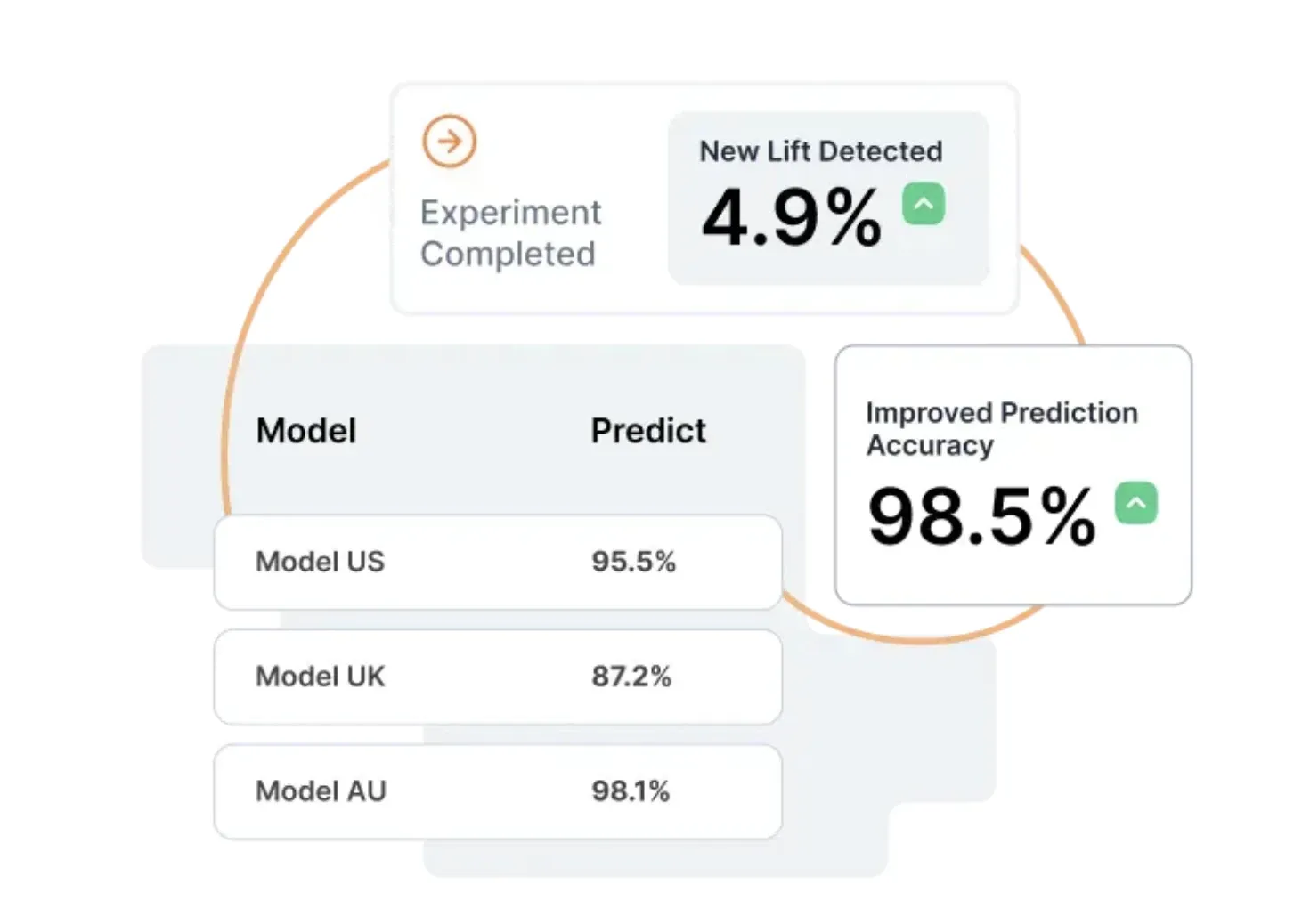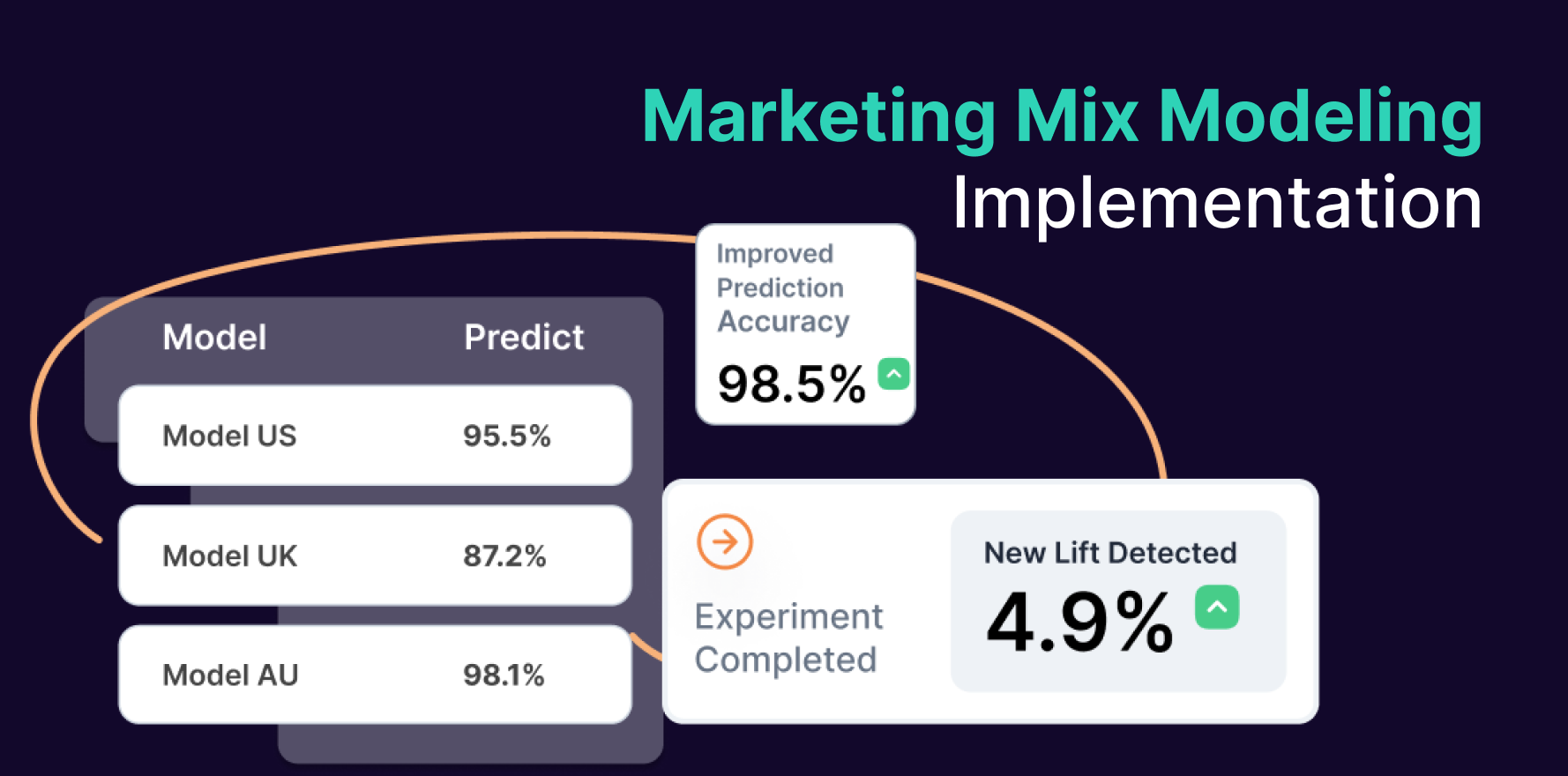Marketing mix modeling (MMM) helps CMOs determine the performance of multi-channel marketing efforts and their financial impacts on an organization’s overall ROI. A Mix Model undergoes complex statistical analyses to inspect aggregate datasets related to sales, marketing, and customers. It paints an inclusive picture of the marketing initiatives and relevant results.
In a world where online customers are becoming hypervigilant about sharing their data, and brands are headed toward a cookieless scenario, MM Models showcase the success of cross-channel campaigns without interfering with users privacy. MMM focuses on public sources and first-party data for its analysis. This has become a significant reason why brands running campaigns across more than three channels rely heavily on Mix Models and Marketing Attribution.
Additionally, Marketing Mix Models can measure the impact of offline marketing initiatives like TV, Radio, Print ads, and similar channels where tracking cookies is impossible.
Nevertheless, Marketing Mix Modeling is associated with a few myths and assumptions. For example, although this approach is entirely refined, many businesses still confuse it with traditional MM Modeling.
In this article, we will list some of the common myths related to Marketing Mix Models and clarify them with facts and real-life results.
Myth 1: MM Models take a long time to build
Misconception: MMM takes a long time to develop.
Clarification: Marketing Mix Models don’t take a long time to develop. With automation, businesses can reduce the time to develop an MM Model to minutes.
Around six to six-seven years ago, MM Models required over six months to develop. Primarily because there was no automation, marketers would be required to manually integrate MM Models into different data sources and feed the models with large volumes of data before they could deploy it to optimize their marketing efforts.
However, with automated Marketing Mix Modeling solutions like Lifesight, enterprises can reduce the processing time.
Here’s how this solution works:
- It trains the MM Model with all your business’s historical data within 45 minutes and eliminates the scope of assumptions.
- It tests different budget scenarios within your campaigns instantly.
- It auto-refreshes and adjusts campaigns based on customer lifecycle.
Budget optimizer by lifesight
Myth 2: MMM and Multi-Touch Attribution (MTA) are the same
Misconception: Many confuse MM Models with MTA since both of these approaches deal with measuring marketing effectiveness.
Clarification: MMM and MTA are both analytic approaches that address similar business needs of meeting objectives. However, the level of granularity varies for these two frameworks. MMM analyzes aggregate campaign-level datasets, while MTA analyzes device-level and individual customer-level datasets across different touchpoints.
MTA is a bottom-up approach focusing on target customers’ exposure to various marketing initiatives and their relevant actions. On the contrary, marketing mix modeling is a top-down approach that analyzes each component that impacts a business’s overall growth.
The components include economic factors like GDP, recession, organization-level updates like product launches, funding rounds, and the latest promotional tactics.
CMOs use MM Models quarterly or yearly to identify which channels are most profitable and unresponsive and accordingly move budgets.
Marketing Mix Modeling software, Lifesight can elevate this analysis and assist CMOs in scaling their campaigns with more confidence.
Marketing Mix Modeling attribution
With Lifesight’s AI-driven Mix Modeling software, CMOs can achieve the following:
- Identify the overspending sources and take immediate action.
- Predict KPIs and adjust the budget accordingly.
- Allocate the right amounts to the proper channels to maximize ROI.
Myth 3: MM Models are applicable only for offline marketing
Misconception: The Marketing Mix Model is only helpful in assessing traditional, offline marketing channels.
Clarification: This myth originates from the concept of the traditional Marketing Mix Modeling approach. In the 1980s, marketing and paid advertisements were limited to offline channels like billboards, television, and radio.
Marketing mix models have grown more sophisticated and can accommodate datasets acquired from online and offline channels.
Marketers experimenting with various digital channels like LinkedIn, Facebook, Google, YouTube, and Instagram can efficiently perform campaign-level analysis with Marketing Mix Models. For these channels, MM Models focus on digital variables like impressions, Ad spends, organic sessions, traffic, and the speed of video content.
That being said, the variables for mix models vary brand-wise. For example, including both impressions and spending in your marketing mix model is not a good idea. Instead, choose a variable that matches your objective.
Spending is the accurate variable if your brand is willing to understand how much ROI it generates from different channels. Alternatively, if the focus is on the quality of the marketing efforts, impressions are a suitable variable.
Ideally, consider running multiple rounds of iterations with different combinations of these variables to confirm their effectiveness.
MM Modeling is a streamlined tool to identify the highest-performing channels and predict the effectiveness of future campaigns.
Myth 4: It’s a one-time exercise
Misconception: Once done, MMM doesn’t need repetition.
Clarification: The global marketing landscape is ever-changing. Marketers need a resilient approach to adapt to these changing trends. While there is a common misconception that Marketing Mix Models are for one-time use, this is untrue.
Marketing Mix Models consider several environmental and temporal factors to analyze marketing campaigns. Though a Mix Model focuses on historical data, its core goal is to forecast future marketing best practices that businesses can leverage to build a strategic roadmap.
Consider Marketing Mix Modeling as a repeat exercise that integrates with different data sources, adapts to a brand’s current campaigns, and remains relevant to the changing environment.
For instance, Lifesight’s Marketing Modeling Software integrates with existing attribution models automatically and leverages the continuous flow of existing data to generate accurate Mix Models. Once combined with data sources, it uses lift values from existing attribution to calibrate or retrain the model as required over time.
attribution models
Myth 5: All external factors are accounted for
Misconception: MMM captures every external influence on sales.
Clarification: A Marketing Mix Model aims to break down a brand’s campaign performances by channels and provides data-driven insights on the impacts of these campaigns on overall sales.
MM Models base their analysis on multiple variables like sales data, marketing data, consumer data, product data, economic data, and competitor data to analyze the effectiveness of marketing efforts.
The primary goal of an MM Model is to identify the impact of various external factors on company sales. These external factors are the variables that directly impact the relationship between a brand’s current marketing mix and sales.
For example, the growth or shrinking of the global ecommerce industry depends on external factors like recession, political disruptions, and shifting consumer preferences. Mix Models focus on these factors while analyzing the effectiveness of a brand’s marketing efforts.
Nevertheless, quantifying each external factor and its role in overall sales is not guaranteed.
Several qualitative factors contribute to an organization’s overall sales, such as:
- Zero product-market fit
- A flawed business model
- Legal challenges
- The absence of a suitable team
All these play a critical role in overall sales growth. Statista claims that 35% of businesses fail because there is no market need for their products. However, an MM Model cannot measure the impact of a lack of market demand on a business’s overall sales growth.
An MM Model’s analysis is limited to only computable external factors.
Myth 6: Data limitations don’t impact outcomes
Misconception: The accuracy of MMM isn’t affected by the quality or quantity of data.
Clarification: When it comes to data quality, MM Models are not different from any other data analytics approach. Marketers must feed accurate, high-quality, granular data to the MM Models to ensure actual outcomes.
Indigent data might increase the possibility of generating inaccurate outcomes from a Mix Model. Alternatively, adding an accurate and distinct data set can reduce the analysis time and simplify the informed decision-making process.
Suppose you are trying to identify the performance of your Black Friday Sales campaign while you insert data related to the Easter campaign. In that case, the model will be misguided and forced to create irrelevant outputs.
A Study by Nielsen shows that the level of accuracy provided by a Mix Model depends significantly on the granularity of data. This research was conducted on 19 Marketing Mix Modeling studies in Japan, and the results showed that MMM outcomes based on regional data were more accurate than state-level data. This establishes that the more specific inputs you add, the more personalized outputs you receive from Marketing Mix Models.
Marketing Mix Models primarily operate with data types like conversion, ad spend, brand context, market trends, and more. By adding accurate datasets across all these fields, CMOs can decode how effectively their marketing efforts perform.
Myth 7: Marketing Mix Models Predict Your Budget
Misconception: Marketing Mix Models forecast how marketers need to allocate their budgets.
Clarification: Marketing Mix Modeling helps businesses split their budgets across different channels on the basis of historical data to optimize marketing efforts. However, this model doesn’t predict budget strategies.
For instance, a Marketing Mix Model can analyze a brand’s cross-channel campaigns to detect that it is overspending by 25% on Google Search Ads and that the relevant ROI is low for this marketing initiative. This input can help marketers build a forecast model to achieve budget optimization. Nevertheless, MM Models don’t provide any budget predictions on their own.
Note that brands often change their business outlook or add new strategies and platforms. As a result, the analyses of Mix Models don’t remain feasible, and the model requires training to adapt to the new business objectives.
Final Thoughts
Learning and deploying Marketing Mix Models is the first step to maximizing ROI from different marketing initiatives while maintaining control of the overall budget.
The increasing use of Mix Modeling has brought this concept into the spotlight, providing critics to question some of its features and introducing misconceptions. Marketers should only follow marketing approaches after exploring them. We recommend trying out Marketing Modeling Software to understand how it can add value to your organization.
Try out Lifesight’s Marketing Mix Modeling software: Book a demo now!
You may also like
Essential resources for your success




























































